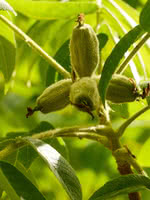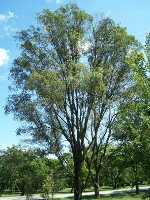Mon-Fri 9am - 5pm Mountain time
Siberian Elm vs Butternut (White Walnut)
Juglans cinerea
Ulmus pumila
PRODUCTION CANCELLED
Butternut is one of the few walnut varieties native to Canada. The nuts are sought after for their mild, sweet, and oily taste. Ensure this tree is planted in full sun and well-drained soil for best results.
Butternut is self-fertile but it has better yields when planted near other butternuts. It can survive in zone 2, but reliably produces nuts in zone 3.
A top CO2 absorbing species. Experts think this tree may help climate change more than others.
Siberian Elm is a small to medium-sized deciduous tree. It has a similar form to American Elm, but smaller, with a more pyramidal habit and shorter lifespan. It is also more resistant to Dutch Elm disease and is very salt tolerant.
Siberian Elm was grown as shelterbelts in the prairies after the Dustbowl disasters, where its rapid growth and tolerance for drought and cold initially made it a great success. It is an excellent shade tree.
Note: Due to it's increasingly controversial reputation for being invasive in warmer climates, we are no longer planning to grow this species for retail purchase on a regular basis.
Butternut (White Walnut) Quick Facts
Siberian Elm Quick Facts
In row spacing: 2.4 - 3 m (8 - 10 ft)

